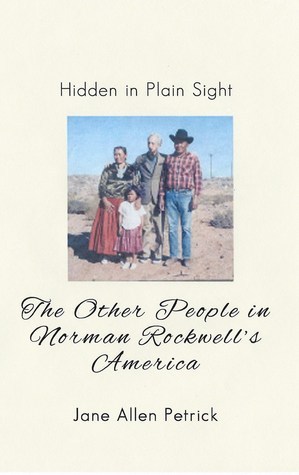What do you think?
Rate this book


143 pages, Paperback
First published July 26, 2013
Award-winning author Jane Allen Petrick has written on a variety of topics ranging from biography to workplace issues. She was a bi-weekly columnist for the Knight Ridder Newswire, and her articles have appeared in numerous publications including the New York Times, Chronogram Magazine and the Washington Post.
Jane was told she ought to be a writer way back when she was a fourteen year old freshman at Notre Dame Girls’ High School. But she didn’t want to hear it. She did not want to be a writer. She did not want the isolation that sets in when a writer gets into “the zone”, what the author Mavis Gallant calls “the plunging in (that) frightens me”. So Jane set off to Barnard College and majored in Economics.
But life is what happens when we’ve made other plans. After completing a doctorate in Organizational Psychology, Jane established her own consulting practice. One of her clients, who had connections with Addison-Wesley, told the publishing house about her psychological approach to time management. The next thing she knew, Jane had written and published Beyond Time Management: Organizing the Organization.
Then one of her in-laws began dating a staff writer at Ridge Press/Rutledge Books. During a cocktail party, he bemoaned the fact that he had an assignment to write a biography of Otis Redding for young adult readers and he didn’t know where to begin. Without thinking (maybe it was the cocktails), Jane began babbling on about research steps that were, thanks to a good liberal arts education and the gauntlet of earning a doctorate, second nature to her. The next thing she knew, Jane had a contract with Ridge Press and had written and published The Otis Redding Story.
The final confirmation of her destiny to write came with Jane’s first “in-house” job as a Ph.d: a corporate directorship with Knight Ridder, the newspaper syndicate. When the Business Monday editor of The Miami Herald asked her, during lunch one day in the staff dining room, about topics for a psychologically healthy workplace column …you guessed it. Jane started babbling again and ended up publishing an article every two weeks for the next four years on the Knight Ridder Newswire.
Three times the charm. Jane now happily embraces the power of good writing (including, hopefully, her writing) to explain, inform and improve each of our lives. It is her hope that her latest book, Hidden in Plain Sight: The Other People in Norman Rockwell's America will do that for you, and that you will gain as much from reading it as Jane has learned from creating it for you.
Jane and her husband, Kalle, now divide their time between their homes in Florida and in New York's beautiful Hudson Valley.
